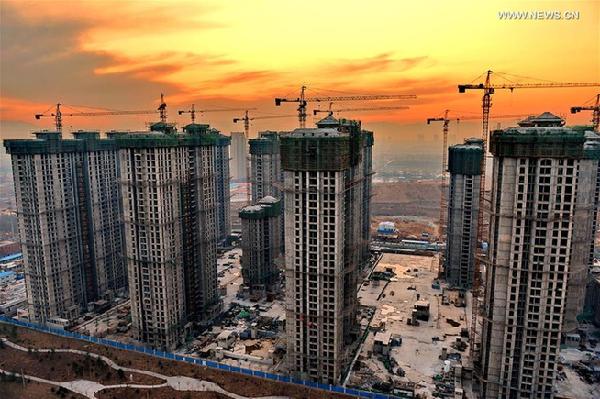China's housing market divides after curbs
china.org.cn / chinagate.cn by Chen Xia, October 11, 2016 Adjust font size:
|
|
|
Photo taken on Feb. 17, 2016 shows a cluster of residential buildings under construction in Shijiazhuang, capital of north China's Hebei Province. [Xinhua] |
China's housing market has begun to divide after a dozen cities rolled out restrictive measures over the past two weeks to rein in increasing house prices.
Although sales in some cities dropped sharply during the weeklong National Day holiday, some cities saw multifold increases.
Among first-tier cities, Beijing and Shanghai saw a drop of more than 40 percent in the floor areas of new homes sold in the past week as compared with last year, while in Guangzhou, the number rose 454 percent, as shown by statistics from CRIC Information Group.
From Oct. 1 to 7, a total of 391,800 square meters of new homes were sold in Guangzhou, with 153,700 square meters sold on Oct. 1, breaking the city's record for this year.
In smaller cities, hot markets like Nanjing and Xiamen began to cool off while homes in other cities like Nanchang began to sell fast. During the holiday, 203,100 square meters of new homes were sold in Nanchang, the capital city of Jiangxi Province, up 344 percent as compared with 2015.
The sales rise in some cities was a result of the outflow of investments caused by restrictive measures in the hot markets, said Yang Kewei, a CRIC analyst.
For example, after Guangzhou, Foshan and Dongguan in Guangdong Province launched measures to curb home price rises, some purchasers went to nearby Shaoguan to buy properties. As a result, 86,300 square meters of new homes were sold in seven days in Shaoguan, a 157 percent increase when compared with last year.
However, since real estate remains a major investment target for the public, home prices in hot markets will keep rising in the short run despite a decrease in floor area sold, Yang estimated.
Zhang Dawei, an analyst for Centaline Property, also said that it will take a few more days to see the real effects of the restrictive measures, which he estimated will make an impact on the market in the fourth quarter of this year.
Since Sept. 30, 21 cities, including both first-tier cities and smaller cities, have rolled out 26 policies ranging from higher down payments to home purchase restrictions to curb speculative housing purchases.
